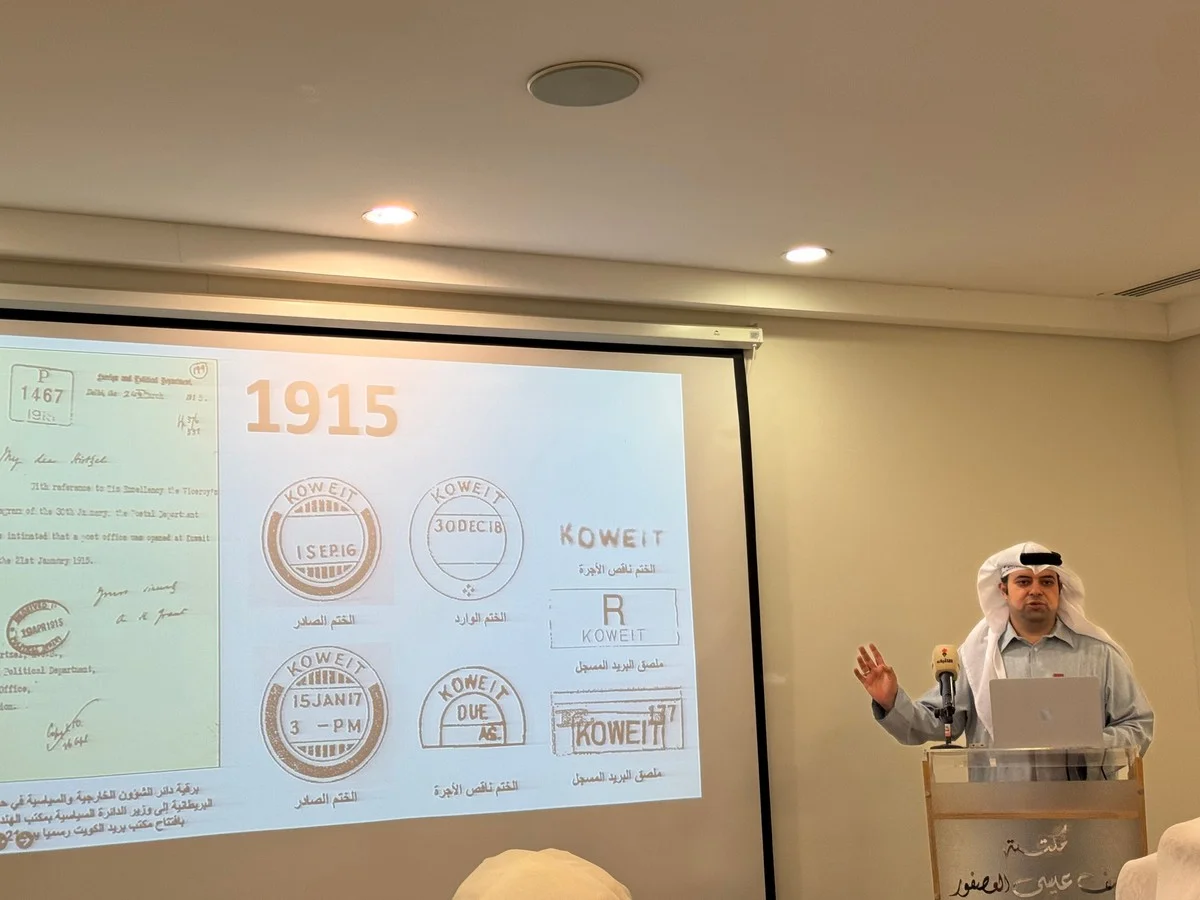22/10/2025
Kuwait Philatelic and Numismatic Society
22/10/2025

KUWAIT CITY, Oct 22: The Kuwait Philatelic and Numismatic Society hosted a specialized symposium on Tuesday, spotlighting the evolution of postal services in the State of Kuwait and tracing key milestones that shaped its development from the 18th century to national independence.
During the symposium, titled "History of Kuwait's Post from the Beginning to Independence," Issa Dashti, Secretary of the Kuwait Philatelic and Numismatic Society, presented a detailed historical account, beginning with the earliest known postal activity in the region.
“The first documented postal message was sent in 1750 through the Dutch East India Company,” Dashti stated, adding that Kuwait’s postal journey passed through several pivotal stages influenced by both regional and global political and economic dynamics. These developments, he noted, contributed to the gradual establishment and stability of Kuwait's postal services.
Dashti highlighted the repeated transfer of the postal center from Basra to Kuwait, driven by political disputes, and the subsequent relocation of the English East India Company and the British Resident Office to Kuwait, which led to the formal introduction of postal services in the country.
He revealed that the first recorded postal trip between Kuwait and Aleppo was operated by the English East India Company on July 15, 1775. As postal operations evolved, the first stamps used in Kuwait appeared in 1923, featuring King George V.
Dashti noted key milestones in airmail history, including the first airmail flight between Baghdad and Kuwait on January 7, 1933, which carried 53 letters, followed by the first airmail route between Kuwait and Calcutta on July 16, 1933. In that same year, mail was sent from Kuwait to New Zealand, totaling 31 letters. However, by late 1937, direct airmail services were suspended, necessitating overland delivery to Basra before reaching Kuwait.
Among the notable postal achievements, Dashti mentioned the issuance of non-denominated stamps bearing the image of Sheikh Ahmad Al-Jaber Al-Mubarak Al-Sabah between 1947 and 1950, commemorating the Ruler's Accession Day. One such stamp was issued each year and distributed freely to citizens to accompany official British stamps that carried Kuwait’s name during that period.
Dashti also recounted the early steps toward postal independence. In 1956, the Kuwaiti government began training personnel in preparation for assuming control of postal operations. This culminated in the establishment of the National Postal Administration on February 1, 1958, and the opening of the first national post office in Safat Square, adjacent to the Ministry of Finance.
He added that January 31, 1959, marked the final day of using British stamps labeled with Kuwait's name and currency. On February 1, 1959, the Kuwaiti government fully assumed control of postal services with the opening of the General Post Office and the issuance of 13 Kuwaiti stamps in the country’s official currency at that time — the rupee and the piaster. These denominations would later be replaced with values in Kuwaiti fils and dinars, following the introduction of Kuwait's national currency.


